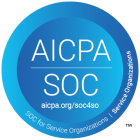To maximize revenue growth via user engagement and adoption, product-led revenue models have grown more popular in recent years. The premise behind these models is that firms may attract a huge user base by providing free or low-cost versions of their goods and then monetizing that user base via various revenue sources. OpenView Partners indicate that product-led adoption across tech firms grew from 45% in 2019 to 55% in 2022.
Seeking to explore the intricacies of product-led revenue strategy, this article uncovers the main product-led revenue models as well as some guidelines around how to decide which one of these might benefit your business.
Exploring the Different Types of Product-led Revenue Models
Overall, there are four main categories of product-led revenue models:
Freemium Model
This paradigm entails releasing a free basic, feature-limited version of the product, charging more for access to advanced settings or more use. Products with a low marginal cost of production often benefit from the freemium model since it encourages consumers to try the product before making a purchase decision. Businesses may gain a huge user base by providing a free version and converting a portion of those people into paying subscribers. Dropbox and Evernote are examples of organizations that have successfully embraced the freemium model. 75% of product-driven businesses select either a free trial or freemium approach, according to StatHeap.
Premium Model
Premium, which is central to this business strategy, encompasses an upgraded, more expensive version of the product. This pricing strategy is well-suited to items that substantially benefit their consumers. To attract customers who are prepared to pay more for a higher level of service, many companies now provide “premium” or “upgraded” versions of their products. Spotify and LinkedIn are examples of organizations that have effectively used the premium model.
Pay-as-you-go Model
As opposed to a flat rate, consumers are charged depending on their actual usage under this approach. This pricing strategy is convenient for items with irregular consumption since customers pay only for what they consume. Many consumers are hesitant to sign up for a service on a monthly or yearly basis, and companies may win them over by providing a pay-as-you-go option. Companies like Amazon Web Services and Twilio demonstrate the viability of the pay-as-you-go model.
Subscription Model
Last but not least, the subscription model involves charging customers on an ongoing basis to continue using the product. Products like software and content services provide consumers with continuous value and work well under this paradigm. Businesses may attract and retain customers in the long run by using subscriptions. Netflix and Microsoft Office are two examples of subscription-based business models that have found success.
Start by Looking at the Competition
It is important to evaluate your competition and see their revenue models. This can give you ideas and help you differentiate yourself from the competition. For example, if your competitors use a subscription model, you may want to consider offering a pay-per-use model instead.
Bain & Company recently surveyed 176 top executives in the North American business-to-business software industry, and they discovered that roughly 75% are worried about competition from PLG businesses.
Deploy A/B Testing
A/B testing may be a great avenue to examine the effect of changes to the price structure, but it’s vital to avoid testing the dollar amount as the variable. Alternatively, organizations may test multiple value measures or price tiers to find which resonates best with consumers. This may help a corporation determine the best price structure that optimizes income while simultaneously giving value to the client.
Assess Your Pricing Strategy
When considering your pricing strategy, it’s important to determine what your users are willing to pay for your product. Conducting user research or surveys can help you gather this information. When determining your pricing strategy, you should also consider factors such as customer acquisition costs and customer lifetime value. Overall, you may consider a freemium model, where users can access basic features for free and upgrade to premium features for a fee. This can be an effective way to attract new users and generate revenue from existing users.
Define End-User Success
The success of product-led business hinges on how well it solves a problem for its users. To ensure that your product meets your users’ needs, it is important to start with an end-user success statement. This statement should outline what success looks like for your users and what value your product provides them.
Unlike a sales-led company, where success is closing a deal, in a product-led company, success is defined by user success. In a product-led growth (PLG) model, the company’s success depends on whether users can see the product’s value. The company’s bedrock should be set up to support user success since it is the foundation upon which the company’s success is built.
Review Your Product-led Model
Once you have chosen a product-led revenue model, it is important to test and iterate. Start by testing the model with a small group of users and gather feedback. Use this feedback to iterate and improve your revenue model. Continuously testing and iterating your revenue model can help you identify new revenue streams and improve the overall user experience.


